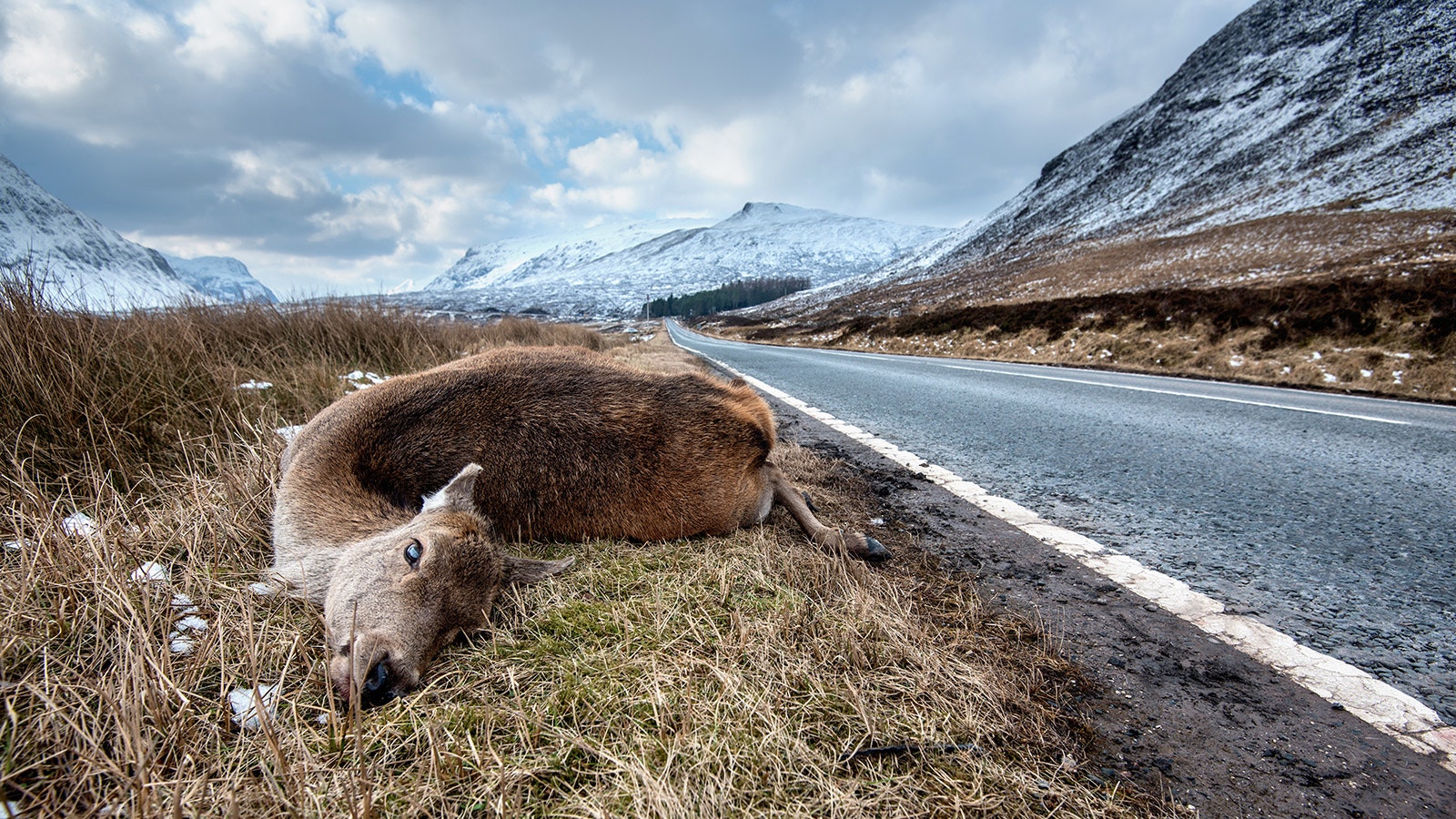The end of daylight saving time is deadly for deer, and the number of deer getting hit on America’s highways jumps by 16% the week after clocks are moved back an hour, leaving more people driving in the twilight and dark.
That’s according to a study published in Current Biology.
“Based on 1,012,465 deer-vehicle collisions and 96 million hourly traffic observations across the United States, we show that collisions are 14 times more frequent two hours after sunset than before sunset, highlighting the importance of traffic during dark hours as a key determinant of deer-vehicle collision risk," according the authors’ summary of the study.
“Year-round daylight saving” would prevent roughly 33 human deaths, 2,054 human injuries, 36,550 deer deaths, and save about $1.2 billion in vehicle damage annually," according to the study.
Mule Deer In Love, And Danger
There hasn’t been any specific study of the effects of the time change on wildlife collisions in Wyoming, but some residents said there seems to be a notable jump this time of year.
The time change could be a factor, Wyoming Department of Transportation (WYDOT) spokesman Cody Beers told Cowboy State Daily.
Another major contributing factor is that right about now is when the deer rut (mating season) kicks in. And amorous buck mule deer aren’t paying attention to traffic, he said.
“You’ll see this glassed-over look on the bucks’ faces, and they’ll walk right out in front of you, because they’re in love,” he said.
Mule deer are by far the most-frequently hit big game animals in Wyoming, Chris McBarnes, president of the WYldlife Fund, told Cowboy State Daily.
There are approximately 6,500 vehicle collision with big game animals every year in Wyoming. And of those, 85 percent are mule deer, he said.
“We lose about 2% of our mule deer population every year to vehicle collisions,” McBarnes said.
Many highways cut through areas where mule deer move between food and water sources, Beers said.
And major mule deer migration routes are also intersected by highways, McBarnes said.
One such area of special concern is a 25-mile stretch of U.S. Highway 26, roughly centered around Dubois, where hundreds of mule deer are killed every year.
It’s earmarked for a $28 million wildlife crossing project, with three underpasses and an overpass for deer and other animals.
Dawn And Dusk Are Terrible Times
Beers said that while WYDOT keeps track of where dead deer are found along highways, there hasn’t been a concerted effort to record the times when those animals were killed.
In many cases, unless a driver reports it right after it happens, there’s no way of knowing, he said.
However, sunrise, sunset and right after dark seem to be the worst times for deer and other wildlife getting hit, Beers said.
Animals are the most active during those times, and reduced visibility for drivers makes it all the more dangerous, he said.
Animals that get hammered hard by semi-trucks or other large vehicles end up as “scoop shovel deer,” as cleanup crews grimly call them, he said.
“That extra hour of dark (after the time change) probably doesn’t help,” Beers said.
"Pretty soon, we’ll be at that time of year when people will be driving to work in the dark and then driving home in the dark,” he added.
McBarnes agreed that it makes sense that the number of deer getting killed rises when clocks change.
“I would say, anecdotally, the amount of accidents that happen at dawn and dusk goes up this time of year,” he said.
Smacking A Deer Not Worth The Cost
WYDOT admonishes drivers to slow down, especially when visibility is poor, Beers said.
“You might save five minutes on the day by driving fast, but if you hit a deer you’ll spend the next month and thousands of dollars trying to fix your vehicle,” he said.
With the government shutdown, and other disruptions in federal highway funding, the date that construction might start on the Dubois wildlife crossing remains uncertain, McBarnes said.
So far, $2.7 million in private donations have been raised. And once the government shutdown is resolved, grant applications for federal wildlife crossing funds should be available, he said.
WYDOT might be able to secure an $8 million engineering grant for the project in 2026.
“It’s not unreasonable to think that a project like this could go to a construction bid in the spring of 2027, and ground could be broken that fall,” he said.
Mark Heinz can be reached at mark@cowboystatedaily.com.





